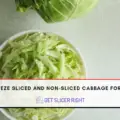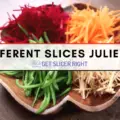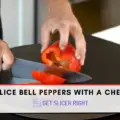Direct Answer: Chefs cut corn on the cob in slices by first stabilizing the cob on a paper towel placed in a bowl. They then use a short knife to cut the kernels from top to bottom, rotating the cob after each section.
The Importance Of Proper Corn Slicing
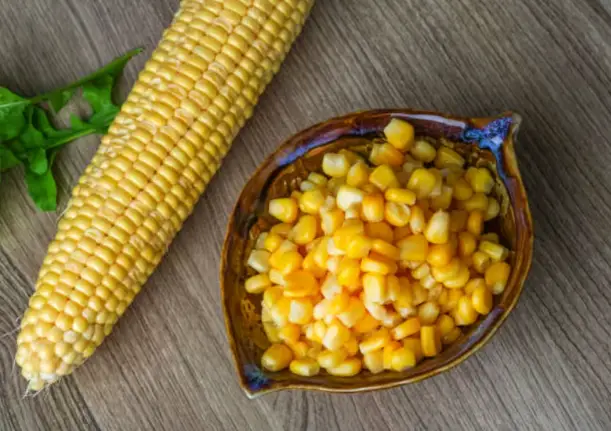
Slicing corn on the cob may seem like a simple task, but it holds significance in the culinary world for several reasons.
- Mastering the technique of slicing corn kernels off the cob allows you to utilize corn effectively in various recipes. Whether you’re preparing a salad, soup, stir-fry, or salsa, having evenly sliced corn kernels ensures even cooking and distribution of flavors. It enhances the overall texture and appearance of the dish.
- Slicing corn on the cob is particularly important when you plan to freeze corn for future use. Freezing whole cobs can take up a lot of space in the freezer, while sliced kernels can be conveniently stored in smaller containers or freezer bags. Sliced corn freezes more efficiently and thaws quickly when needed, allowing you to preserve the freshness and taste of the corn for longer periods.
- Proper corn slicing helps minimize mess in the kitchen. Slicing the corn kernels off the cob reduces the risk of kernels scattering across the counter or falling onto the floor. It provides a cleaner and more organized process, making it easier to collect the kernels and clean up afterward.
The Ideal Knife For The Job
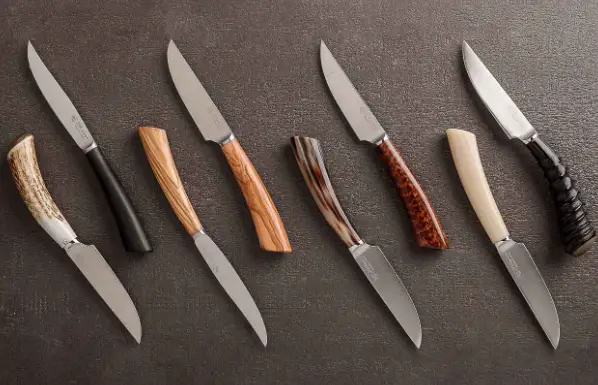
When it comes to slicing corn on the cob, selecting the right knife is important for achieving clean and precise cuts. While a chef’s knife is a versatile tool in the kitchen, chefs often opt for a utility knife or a steak knife for slicing corn.
- Utility knives and steak knives are smaller in size compared to chef’s knives, which provides better control and maneuverability when working with smaller, more intricate tasks like slicing corn kernels. The narrower and slightly serrated blade of a steak knife or a utility knife helps in easily navigating through the corn kernels without crushing them. The serrations can grip the corn surface and provide a better cutting experience.
- On the other hand, paring knives, which are typically used for smaller tasks like peeling and trimming, may not be the ideal choice for slicing corn. Corn cobs can sometimes be resistant and require a bit more force to cut through, which is where the slightly longer and sturdier blade of a utility knife or steak knife comes in handy.
How Do Chefs Cut Corn On The Cob In Slices?
Step 1: Husk the corn: Start by removing the husk and silk from the corn on the cob. Peel back the husk from the top and remove all the silk strands.
Step 2: Place the corn on a cutting board: Lay the husked corn on a stable cutting board.
Step 3: Secure the corn: Hold the corn firmly with one hand to ensure stability while cutting.
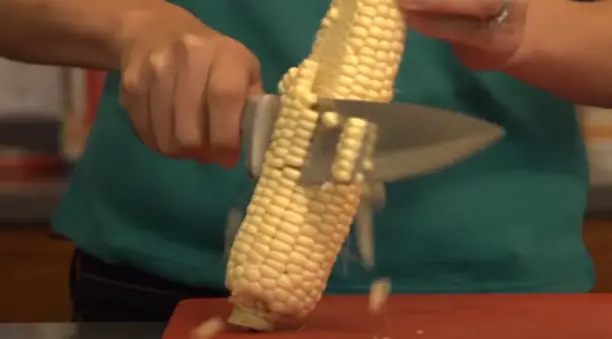
Step 4: Slice off one side: With a sharp knife, make a straight downward cut along one side of the cob, close to the core. This will create a flat surface that will keep the cob steady during further slicing.
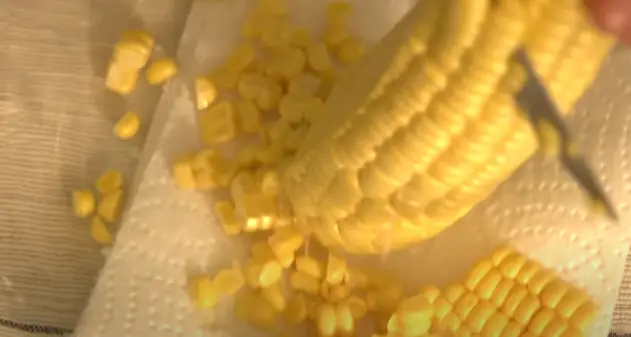
Step 5: Slice the corn: With the flat side of the corn resting on the cutting board, use a gentle sawing motion to slice the kernels off the cob. Start from the top and work your way down to the bottom, cutting as close to the cob as possible.
Step 6: Repeat on remaining sides: Rotate the cob and repeat the slicing process on the remaining sides, creating even slices of corn kernels.
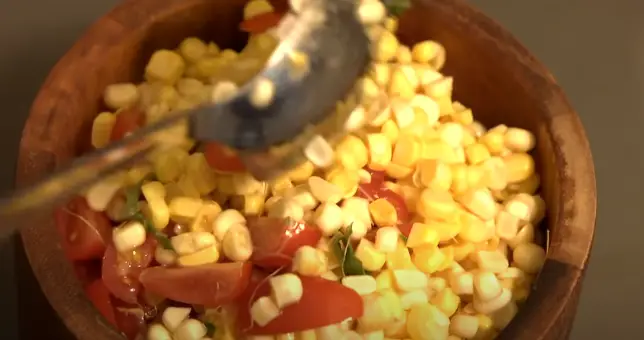
Step 7: Collect the slices: Gather the sliced corn kernels into a bowl or onto a plate as you work your way around the cob.
By following these steps, you can easily cut corn on the cob into slices. The resulting corn slices can be used in various recipes or enjoyed as a side dish. Remember to exercise caution when handling sharp knives and ensure a stable cutting surface for safety.
FAQs
Can I slice corn off the cob if it’s raw?
Yes, you can slice corn off the cob whether it’s raw or cooked. However, it’s slightly easier when the corn is cooked.
What do I do with the remaining cob after slicing off the kernels?
You can freeze the cobs and use them later for making soups or chowders. They add a wonderful corn flavor to these dishes.
Why do chefs cut corn on the cob into slices instead of leaving it whole?
Slicing corn on the cob allows for easier incorporation into recipes and ensures even cooking and distribution of flavors. It also provides more versatility in how the corn can be used in various dishes.
Can I cut corn on the cob in slices without removing the husk?
It is generally recommended to remove the husk before cutting corn on the cob into slices. The husk can hinder access to the kernels and make it more challenging to achieve clean cuts.
Can I use a serrated knife to cut corn on the cob into slices?
Yes, a serrated knife, such as a steak knife or a utility knife, can be effective for cutting corn on the cob into slices. The serrations help grip the surface of the corn for better control and cutting.
Conclusion
Cutting corn on the cob into slices can be a tricky task due to the round and unstable nature of the cob. However, with the right techniques, one can slice corn on the cob neatly and safely, just like professional chefs do. Chefs typically stabilize the corn on a cutting board, slice off the end to create a flat base, and then cut the cob into desired slice lengths using a sharp knife. This method minimizes risk and maximizes yields. By incorporating these chef techniques into your kitchen practice, you’ll be able to handle not only corn but other similar ingredients with ease and confidence. Remember that patience, careful handling, and a good knife are key to successful kitchen endeavors.
Key Takeaways
- Use a short utility or steak knife for better control when slicing corn on the cob.
- Stabilize the cob in a bowl using a folded paper towel.
- Don’t forget to scrape the cob with the back of the knife for extra flavor.
- Reuse the corn cobs by freezing them and using them later in soups or chowders.

Mario Batali is a renowned author, food enthusiast, and passionate chef who has dedicated his life to exploring the world of culinary arts. With a love for sharing his knowledge and experiences, Mario has become a prominent figure in the food blogging community, inspiring countless readers with his creativity and expertise.
In addition to his culinary prowess, Mario Batali is also a talented writer with a flair for engaging storytelling. He launched his own food blog to share his recipes, cooking tips, and personal experiences in the kitchen. Over time, Mario’s blog gained a loyal following of food enthusiasts who appreciate his unique approach to cooking and his dedication to using only the finest ingredients.
Mario Batali’s passion for food and his commitment to sharing his knowledge with others have made him a true inspiration in the world of culinary arts. Through his blog, cookbooks, and public appearances, Mario continues to spread his love of food and the joy of cooking with his ever-growing fanbase.

